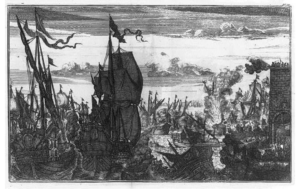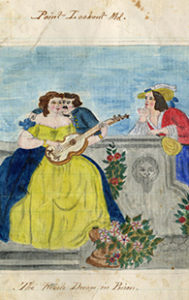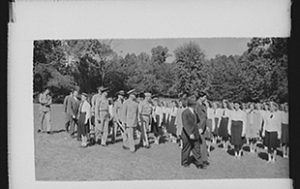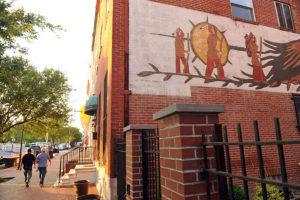
Even the most familiar places sometimes hold secrets.
In late 2016, I invited Museum Studies graduate students from the University of Maryland to visit the Lumbee Indian community of East Baltimore. Their visit was to include a first attempt at a walking tour of sites important to our people in the neighborhood where Lumbee first settled. Our day began at the Baltimore American Indian Center, which is a three-story brick rowhouse in Upper Fells Point, so the Museum Studies students could visit an actual museum. But when it was time to take our walk, our first stop was a Baptist church, one block south, where the Indian Center got its start nearly 50 years ago.
Sis. Linda Cox, a first generation elder of the community and one of the most long-standing, enthusiastic members of both the Indian Center and the church, was the real guide. The tour was our idea—hers and mine— but I was there in more of a support capacity. As Sis. Linda was very excited to be leading the first tour, and maybe even more excited to share the history of the church, we spent more time in front of South Broadway Baptist than anywhere else.
As time passed and lunchtime loomed and it seemed the rest of our tour stops would go unvisited, I encouraged the group to head back “up” the street, toward the next site of significance we had discussed, the old Indian Center daycare/senior citizens building on Lombard. But we didn’t make it more than a few feet before Sis. Linda yelled, “Wait! Don’t you want to tell them about the store?” I was dumbfounded. “What store?” I asked. I saw a Central American restaurant and an alleyway. Well, Sis. Linda had to tell all of us about the Indian store that once was because it was either gone before my time, or faded from my childhood memories.
Sometimes the only way to learn about what once was is to listen to the stories of those who were here before. In the case of the Lumbee community of East Baltimore, there aren’t a lot of written records to be found. Many of our places have changed owners, inhabitants, and purpose. Some have been demolished and built over- literally and deliberately erased- so that there’s no building left to visit, nothing left to see.
Popular narratives of the Great Migration, remembered as a mass movement of southern African Americans to northern cities, do not generally include the multitude of southern American Indians who migrated north as well. Following WWII, Lumbee Indians[1] from rural North Carolina moved to Baltimore City in droves, forming a satellite community in the Southeast quadrant of town, with numbers eventually reaching into the thousands. For a time, this community was the largest concentration of members of a single tribe in any U.S. city. And this community remains the largest population of Lumbee outside of North Carolina, to date.
Though, the Lumbee community is also absent from popular narratives of Baltimore City, and has even been referred to as “invisible,” despite the fact that our presence has marked both the cultural landscape and the built environment. This is particularly true in the adjoining neighborhoods of “Upper Fells Point and Washington Hill,” where the Lumbee first settled. These neighborhoods are currently undergoing a profound transition- one that is not disconnected from the concurrent movement and displacement of Lumbee people from the area. Once fondly referred to as “the reservation,” it becomes ever more difficult to point to evidence of an Indian community in the area today. And it’s just as difficult to point to a simple cause.
Sis. Linda and I are still developing the walking tour. We are in the process of interviewing elders of the community who remember the stores, the bars, and yes- even the restaurant- that Baltimore Lumbees used to own and frequent.
We ask: What is the relationship between identity and place? How has the identity of the Baltimore Lumbee community been shaped by the place our people have inhabited for the past 70+ years? How has the presence of our people shaped the place? What will it mean if we no longer inhabit the place?
Listen to the diverse voices of 100 South Broadway today by tuning into WYPR’s Out of the Blocks.
Follow the work of Community Artist / Folklorist Ashley Minner at ashleyminnerart.com
Ashley Minner is a community based visual artist from Baltimore, Maryland. An enrolled member of the Lumbee Tribe of North Carolina, she has been active in the Baltimore Lumbee community for many years, and regularly visits communities throughout the U.S South and Latin America as well. Ashley works as a folklorist for the Maryland Traditions Program of the Maryland State Arts Council and is a part-time lecturer in the Department of American Studies at UMBC. She is also part-time faculty in the Masters of Fine Arts in Community Arts Program at MICA. She coordinates Artists U Baltimore, a grassroots planning and professional development program run by and for artists. Ashley is a doctoral student in the Department of American Studies at University of Maryland College Park. She was a 2016 Innovative Cultural Advocacy Fellow with the Caribbean Cultural Center African Diaspora Institute (CCCADI) in NY, NY. Her work has been supported by Alternate ROOTS, Open Society Institute (Soros Foundation), the Robert Rauschenberg Foundation, the Maryland State Arts Council, Kresge Arts, and the Warnock Foundation. She is most inspired by the beauty of everyday people.
Disclaimer: The views and opinions expressed on our blog do not necessarily reflect the views or position of Maryland Humanities or our funders.
[1] Along with Indians from other nations, including Coharie, Haliwa-Saponi, and others


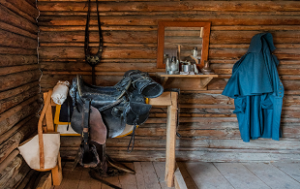 Here’s the job ad: Seventy-five young men wanted. Must be light, strong, fearless and cautious. Must be hard-riding, quick-thinking and have a determined soul. Must be able to perform this mission despite hardship and perils. Must be willing to work in brutal weather, long hours, night and day and be away from home for extended periods of time.
Here’s the job ad: Seventy-five young men wanted. Must be light, strong, fearless and cautious. Must be hard-riding, quick-thinking and have a determined soul. Must be able to perform this mission despite hardship and perils. Must be willing to work in brutal weather, long hours, night and day and be away from home for extended periods of time.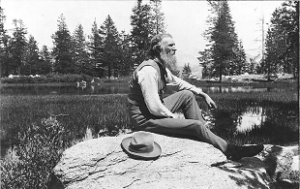
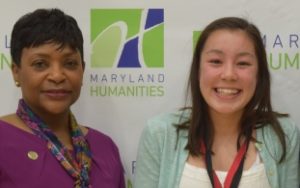 Abigail Setzfand, a 9th grade Calvert County History Day student, received a silver medal at the 2017 National History Day competition in the Junior Individual Website Division for her project on Lewis Hine, a documentary photographer, entitled “Lewis Hine: Focusing the Lens on Child Labor,” which you can explore
Abigail Setzfand, a 9th grade Calvert County History Day student, received a silver medal at the 2017 National History Day competition in the Junior Individual Website Division for her project on Lewis Hine, a documentary photographer, entitled “Lewis Hine: Focusing the Lens on Child Labor,” which you can explore 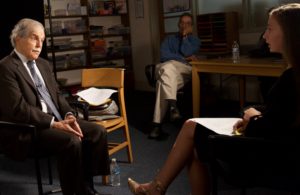 Sitting in a dark and quiet corner of the Southern High School Library I experienced the best of our nation. A former Army Infantry Officer, with a stack of Vietnam books at his feet, sat across from the young woman interviewing him and shared the duty, pride, guilt, sorrow, and comradery that has punctuated his life since his number was called. In turn the student listened, deeply and without judgement. In a historical moment where it is easy to feel like interpersonal skills do not matter, it is a powerful thing to witness people really listening and truly being heard.
Sitting in a dark and quiet corner of the Southern High School Library I experienced the best of our nation. A former Army Infantry Officer, with a stack of Vietnam books at his feet, sat across from the young woman interviewing him and shared the duty, pride, guilt, sorrow, and comradery that has punctuated his life since his number was called. In turn the student listened, deeply and without judgement. In a historical moment where it is easy to feel like interpersonal skills do not matter, it is a powerful thing to witness people really listening and truly being heard.